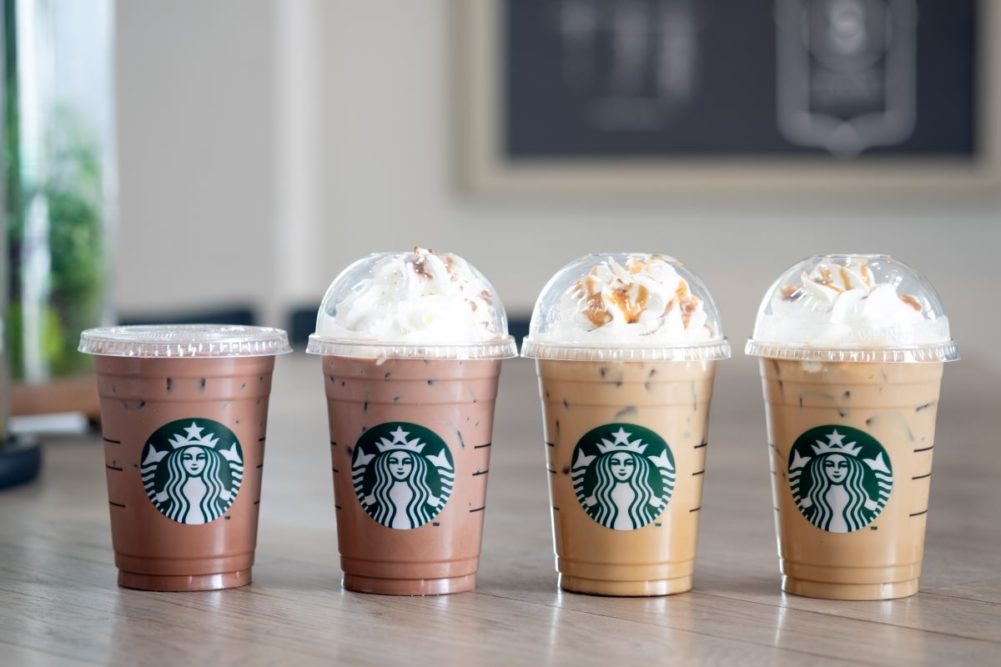SEATTLE — Starbucks Corp. is in the process of reinvention. Management is trying to develop an infrastructure that connects with consumers ordering in store and produces the volume of customized beverages and food required to meet consumer demand for pickup, drive-thru and delivery.
“Our stores need to better reflect what is needed to meet the evolved demand from where they were initially designed,” said Laxman Narasimhan, chief executive officer, during a May 2 conference call to discuss second-quarter results.
Keys to the company’s reinvention strategy are the adoption of new equipment, technologies and store designs to improve processes and overall production.
“To strengthen our health, we need to think of our business as having theaters to the front with a factory in the back,” Mr. Narasimhan said. “Our theaters are where our store partners are focusing on their craft and delivering an elevated experience to our customers.
“To simplify the store partner experience and drive greater productivity within and beyond the store level, we see significant efficiencies in our supply chain, support systems and processes.”
The company will achieve its reinvention goals by shifting its focus, said Mr. Narasimhan.
“Today, our store deliveries involve a high-touch one-size-fits-all model,” he said. “We are out of stock in more items than we would like. Through segmentation and a format-specific approach, we will be able to lower costs while creating a better experience for our partners and, ultimately, for our customers.”
At the same time, the company will need to continue to be profitable and meet financial expectations — which it did during the second quarter of fiscal 2023, ended April 2. Quarterly net income rose 34% to $908 million, equal to 79¢ per share on the common stock, from $674.5 million, equal to 58¢ per share, the year before.
Quarterly sales rose 14% to $8.7 billion, up from $7.6 billion in 2022.
“Q2 consolidated operating margin expanded 130 basis points from the prior year to 14.3%, exceeding our expectations, primarily driven by sales leverage, including better-than-expected recovery in China, pricing, productivity improvement and lapping prior year COVID-related pay,” said Rachel Ruggeri, chief financial officer. “The margin expansion was partially offset by investments in store partners, higher G&A costs in support of reinvention and inflation.”
Sales in North America rose 17% to $6.4 billion, up from $5.5 billion the year prior.
“The growth was primarily driven by a 12% increase in comparable store sales consisting of 6% and 5% growth in transactions and average ticket, respectively, as well as net new company-operated store growth of 4% year-over-year, further strengthened by the continued momentum of our licensed store business,” Ms. Ruggeri said. “Store traffic has surpassed pre-pandemic levels in our busiest dayparts. And even with higher levels of beverage customization and complexity, we were able to serve the surge in traffic as we unlocked incremental store capacity through reinvention.”
International business unit sales were $1.9 billion, up 9% over $1.7 billion during the first quarter of 2022.
“Our international markets across the globe continue to demonstrate strong momentum,” Ms. Ruggeri said. “Excluding China, the segment's Q2 revenue grew 14% from the prior year or up 25% when excluding an 11% impact of foreign currency translation. Once again, our international markets, excluding China, collectively achieved double-digit comp growth, driven largely by transactions.”
First-half net income rose 18% to $1.8 billion, or $1.53 per share, from $1.5 billion, or $1.28 per share.
Period sales rose 11% to $17.4 billion from $15.7 billion.




